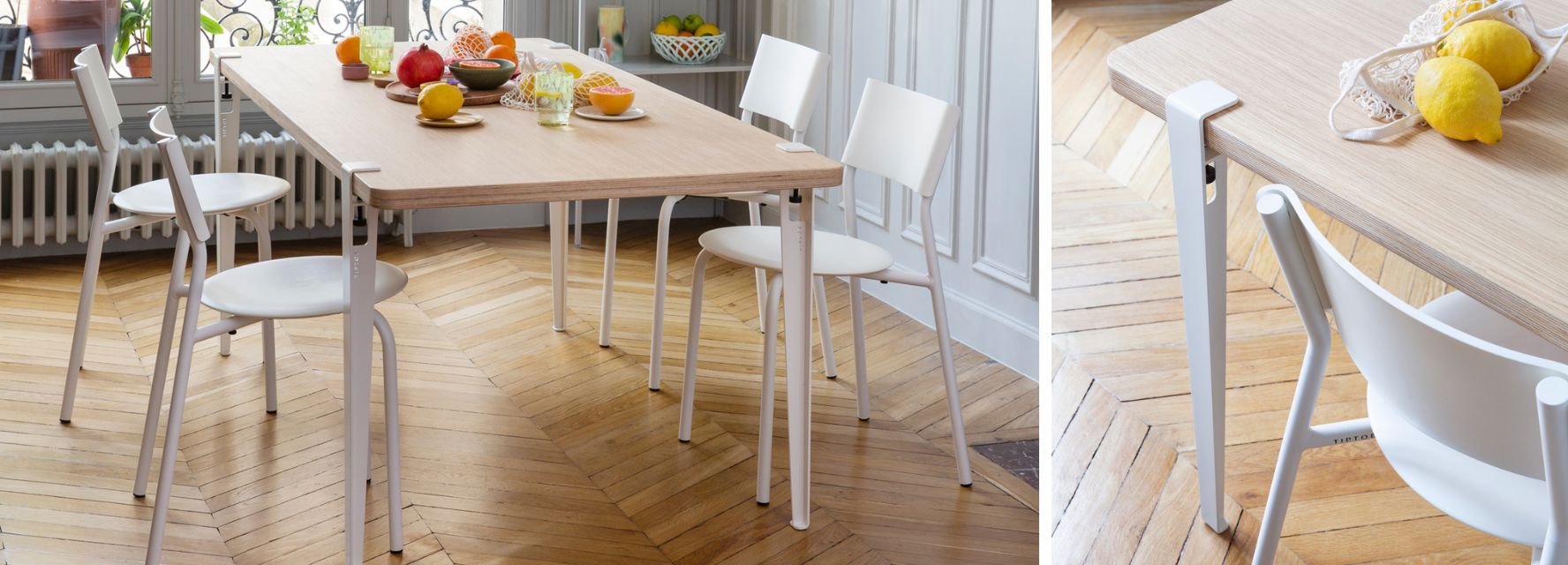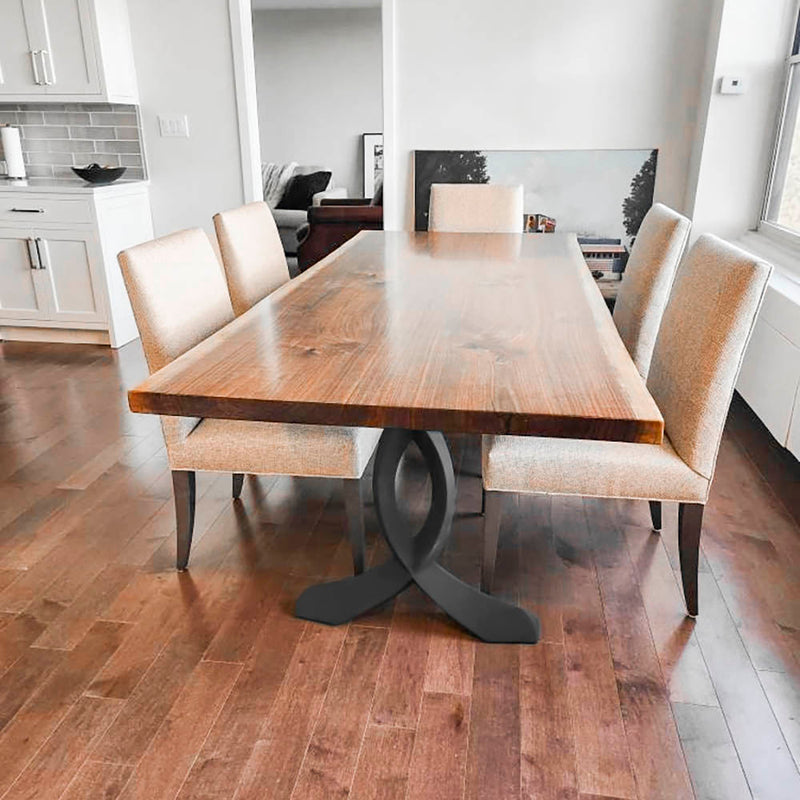Simple Steps to Replacing Old Dining Room Table Legs with New Ones
Simple Steps to Replacing Old Dining Room Table Legs with New Ones
Blog Article
From Conventional to Modern: Find the Perfect Dining-room Table Legs for Your Design
The selection of eating space table legs plays a critical duty in defining the general character of your room, connecting the gap between conventional craftsmanship and modern-day appearances. While traditional styles such as cabriole and turned legs stimulate a sense of classic elegance, contemporary designs like barrette and geometric options offer an opportunity for striking visual passion. Examining the right balance in between these designs requires a nuanced understanding of your existing decor and personal preference. As you think about these elements, the concern remains: exactly how can you perfectly incorporate these varied leg designs to produce an unified dining experience?
Recognizing Table Leg Styles
The variety of eating room table leg styles can considerably influence both the appearances and functionality of the space. Each leg design adds distinct practical functions and visual aspects, accommodating varied layout preferences and usage requirements. Understanding these designs is essential for choosing the appropriate table that aligns with your general interior layout vision.
For circumstances, conical legs supply a clean, timeless appearance that can improve an area's style, while stand bases provide security and make the most of legroom, making them excellent for smaller spaces. Hairpin legs, a hallmark of mid-century modern-day design, present a commercial flair, enabling a ventilated, open feeling. Likewise, trestle legs evoke rustic charm, giving robust assistance and a sense of eternity.
In addition, the option of materials plays a significant function. Wood legs can bring warmth and appearance, whereas steel alternatives usually convey a sleek, modern ambiance. Ultimately, recognizing table leg styles is crucial for creating a natural dining location that mirrors individual style while making sure functionality and comfort. By thoughtfully taking into consideration these components, you can boost both the aesthetic and useful appeal of your eating area.
Conventional Table Leg Options
When choosing eating space table legs, conventional choices typically personify timeless beauty and craftsmanship. These designs mirror a rich heritage and a dedication to quality, making them excellent for those that value traditional aesthetics.
One of the most legendary typical leg styles is the cabriole leg, defined by its elegant bent shape. This layout commonly features attractive makings and is most commonly discovered in Queen Anne and Chippendale furnishings. Another preferred alternative is the transformed leg, which flaunts a collection of smooth, rounded forms that offer a timeless look while keeping stability.
Moreover, the straight leg, while straightforward, uses a sturdy and basic framework that can mix seamlessly with a selection of tabletop designs. For those attracted to ornate detailing, claw-and-ball feet legs evoke a sense of magnificence and can act as a magnificent centerpiece in any type of eating space.
Last but not least, pedestal bases, although not purely legs, supply a different traditional option that permits for enough legroom and can be perfectly carved. Each of these conventional leg designs adds to the general atmosphere of an eating space, marrying feature with visual appeal.

Modern Table Leg Designs
Modern table leg layouts use a varied variety of styles that stress cutting-edge products and tidy lines. These styles commonly focus on performance while serving as striking focal points within an eating space. Minimalist looks are common, with legs crafted from products such as metal, glass, and crafted timber, which add to a airy and modern feeling.
One prominent design is the barrette leg, characterized by its slim, conical structure that supplies stability without overwhelming the table top (dining room table legs). This design is usually found in mid-century contemporary furniture and can effortlessly enhance various dining table forms. An Learn More additional trend is using geometric forms, where legs might take on angular or asymmetrical kinds, including visual rate of interest and a touch of artistry

Mixing Designs for Special Areas
Commonly, house owners look for to develop one-of-a-kind eating areas that reflect their personal design by mixing numerous style aspects. This method permits the incorporation of diverse appearances, causing a harmonious yet distinctive setting. As an example, coupling a rustic wood table with sleek, modern steel legs can produce an attractive contrast that elevates the area's general appeal.
Furthermore, integrating vintage table legs with modern table tops can stimulate a read this article sense of background while preserving a modern perceptiveness. Such mixes not just showcase private taste however also motivate creative thinking, permitting property owners to curate a space that really feels both personal and inviting.
Color plays an essential duty in this blending procedure; selecting table legs that match or comparison with the existing shade system can improve aesthetic interest. Whitewashed legs can soften the daring of a dark table surface, producing a well balanced aesthetic.
Tips for Picking the Right Legs
Selecting the right table legs is vital for attaining both functionality and visual allure in your dining room. Begin by considering the general design of your area. Conventional setups profit from legs that include elaborate makings or turned designs, while contemporary areas might ask for smooth, minimal styles.
Next, evaluate the elevation and security of the legs. dining room table legs. Standard eating tables range in between 28 to 30 inches in elevation, so make certain the legs complement this dimension for comfort. Furthermore, durable materials, such as wood or steel, can boost stability and durability
Examine the leg form also-- alternatives consist of right, tapered, or pedestal designs. Straight legs offer a classic look, while tapered legs can add a touch of beauty. Pedestal bases supply enough legroom and are ideal for smaller spaces.
Verdict
In recap, selecting the optimal dining area table legs needs careful consideration of both traditional and contemporary styles. By balancing leg design, height, and material with the overall decor, a natural and inviting atmosphere can be attained.
The range of eating area table leg designs can substantially influence both the aesthetic appeals and performance of the space. Inevitably, understanding table leg designs is necessary for creating a natural dining area that mirrors personal style while making click here for more certain functionality and convenience.One of the most renowned typical leg designs is the cabriole leg, identified by its graceful bent form. Straight legs provide a timeless look, while conical legs can include a touch of elegance.In recap, picking the ideal eating area table legs requires cautious factor to consider of both conventional and contemporary styles.
Report this page